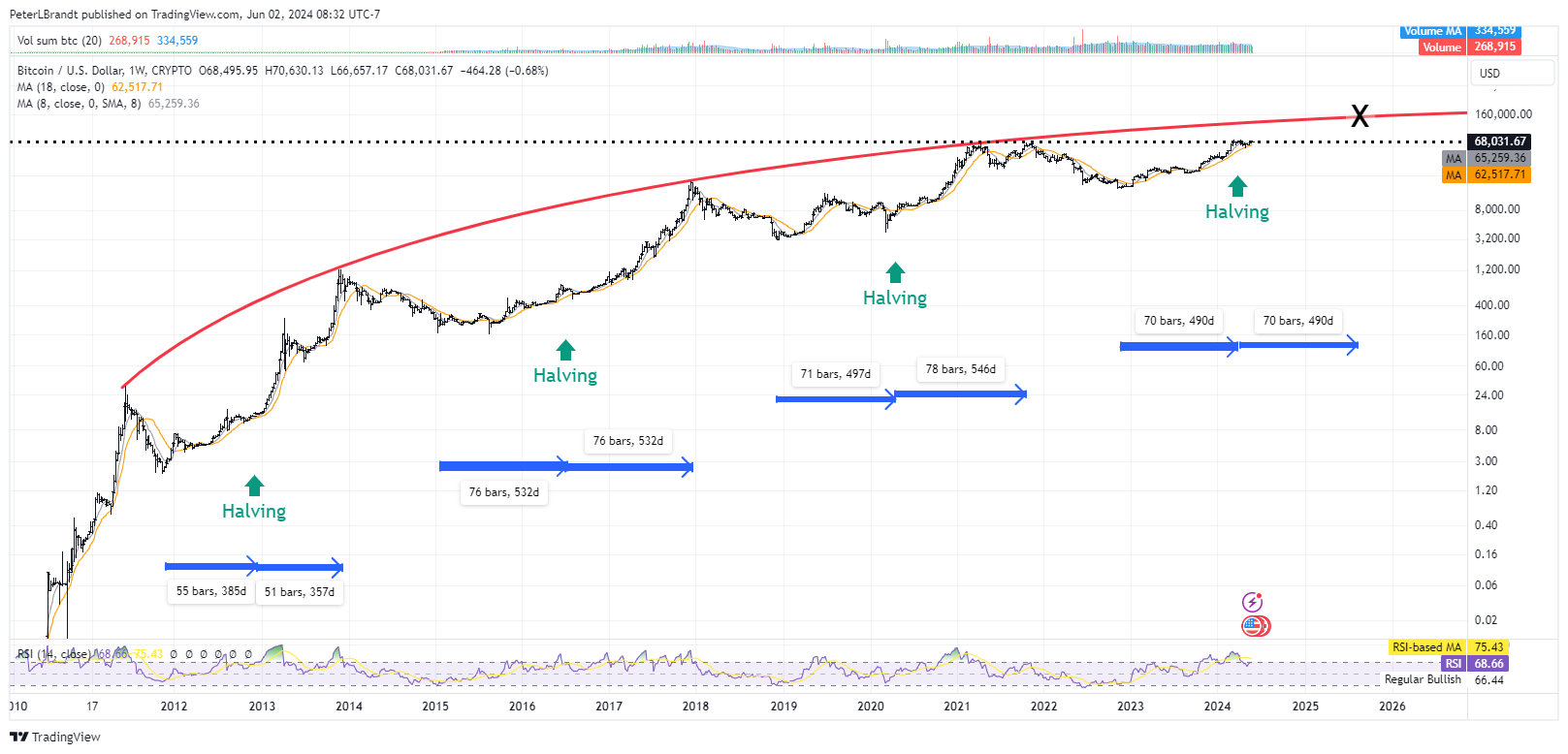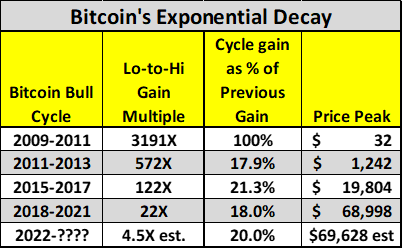Renowned trader and Bitcoin investor Peter Brandt has stirred up a storm of discussion in the crypto community with his latest analysis. His findings, published on his official blog on June 2, 2024, reveal a strikingly symmetrical pattern in past Bitcoin bull markets.
The key insight is that the halving events, which halve Bitcoin mining rewards, have consistently aligned with bull market cycles. Recall that the most recent halving occurred on April 19, 2024.
Peter Bradt predicts $150,000 for Bitcoin by September 2025
Brandt’s analysis delves into historical data. He presents a compelling argument that the number of weeks between significant drops and subsequent halvings is roughly equal to the number of weeks between those halvings and the peak of the following bull run. This pattern is vividly depicted on a chart within his analysis, making it easier for readers to grasp.

The beautiful symmetry of past Bitcoin bull market cycles (Source: https://www.peterlbrandt.com/)
If this pattern holds true, it could mean that the next Bitcoin bull market peak might occur in late August or early September 2025. However, this raises the question of whether this is a case of history repeating itself or if it’s a flawed narrative.
The predicted high price target for Bitcoin adds an extra layer of interest. Brandt suggests that the peaks of previous bull markets follow an inverted parabolic curve. If this pattern continues, the upcoming bull market could peak somewhere between $130,000 and $150,000 per BTC.
Declining peak gains across Bitcoin cycles
Meanwhile, Brandt does acknowledge the limitations of any analytical approach. While he favors this cyclical pattern analysis, he also assigns a 25% probability that Bitcoin may have already reached its peak for the current cycle.
It’s worth noting that on April 26, 2024, he published an analysis titled “Does History Make a Case That Bitcoin Has Topped?” which delves into the possibility of an exponential decay scenario.
In this previous analysis, Peter Bradt identified four major Bitcoin bull runs, with the current one being the fifth. Each cycle’s peak gain shows a significant decrease compared to the last low. For instance, the 2011-2013 cycle’s peak was roughly 20% of the 2009-2011 cycle’s peak. This pattern continues with each subsequent cycle.

Bitcoin’s Exponential Decay (Source: www.peterlbrandt.com)
This trend suggests a loss of 80% of the “exponential energy” in each bull cycle. Applying this logic to the current cycle, the analysis predicted a peak increase of only 4.5 times, translating to a price point of around $72,723—a price already achieved and exceeded in March 2024.
The impact on investor sentiment is significant. While the historical correlation with price surges after halving events offers some hope, the possibility of a significant decline is also a concern. The analyst estimates a 25% chance that Bitcoin may have already reached its peak for this cycle, potentially leading to a decline back to the mid-$30,000 range.
Peter Brandt, in his latest analysis, however, highlights that he refrains from making absolute statements. Meanwhile, the majority of cryptocurrency enthusiasts anticipate that Bitcoin will reach its highest value in 2025, with some experts predicting as high as $1 million per BTC.









